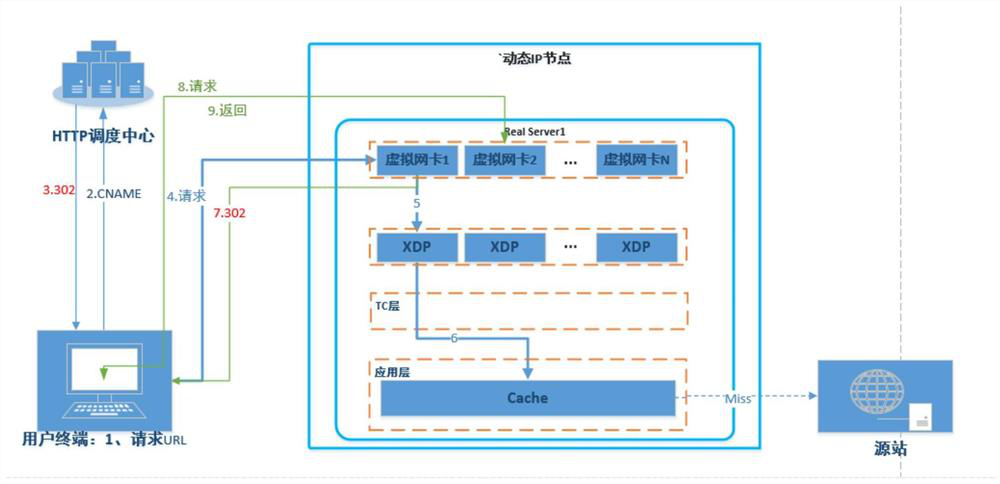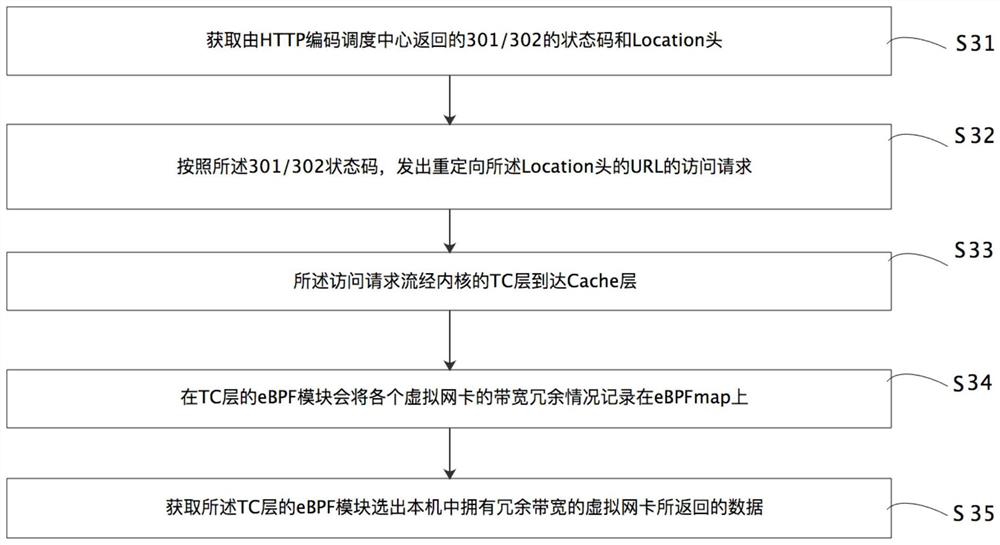CDN node stand-alone scheduling method and system based on eBPF technology
A stand-alone scheduling and node technology, applied in the transmission system, electrical components, etc., can solve the problem of high efficiency of client access lines and achieve the effect of reducing link efficiency
- Summary
- Abstract
- Description
- Claims
- Application Information
AI Technical Summary
Problems solved by technology
Method used
Image
Examples
Embodiment Construction
[0038] For a clearer illustration of the implementation of existing local load scheduling see figure 1 , for dynamic IP resource nodes, virtualize multiple virtual network cards in the node stand-alone, and request networking through network card dial-up. The overall steps are as follows:
[0039] 1. The user terminal requests the URL;
[0040] 2. The user terminal is guided to the HTTP dispatch center of the CDN through the CNAME record;
[0041] 3. The HTTP dispatch center returns a status code of 302 and a Location header, which contains the IP node address after global dispatch;
[0042] 4. The user terminal receives the 302 status code and redirects to the node IP to request access to the URL in the Location header;
[0043] 5. The request arrives at the node, assuming that the request is to the virtual network card 1, and flows to the network card driver XDP;
[0044] 6. The access request flows through the TC layer of the kernel to the Cache layer; if there is cached...
PUM
 Login to View More
Login to View More Abstract
Description
Claims
Application Information
 Login to View More
Login to View More - Generate Ideas
- Intellectual Property
- Life Sciences
- Materials
- Tech Scout
- Unparalleled Data Quality
- Higher Quality Content
- 60% Fewer Hallucinations
Browse by: Latest US Patents, China's latest patents, Technical Efficacy Thesaurus, Application Domain, Technology Topic, Popular Technical Reports.
© 2025 PatSnap. All rights reserved.Legal|Privacy policy|Modern Slavery Act Transparency Statement|Sitemap|About US| Contact US: help@patsnap.com



